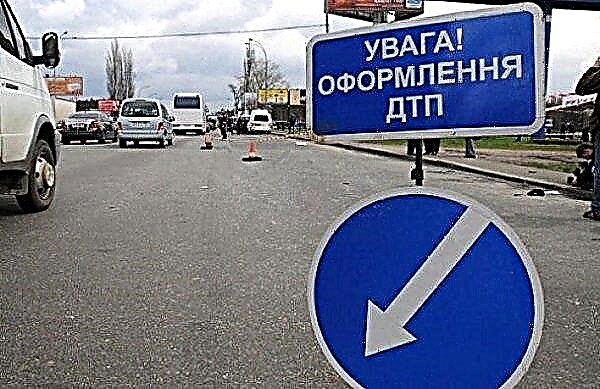

The content of the article:
- Carbon monoxide poisoning: causes, symptoms, consequences
- Assistance to the injured
The male half of humanity is more sensitive to their vehicles. They can spend the whole weekend washing and polishing their "iron horse", use minor repairs as an excuse to arrange a get-together with friends, and turn the garage into a living space where they can spend time comfortably.
Unfortunately, this is why men are more regularly exposed to the harmful effects of exhaust fumes.
Carbon monoxide poisoning occurs much more often than one might imagine, and it can happen unexpectedly and imperceptibly, when a person is not even able to react. How can you get poisoned by the products of gasoline combustion, how to determine the symptoms in time, what help to provide to the injured person?
Carbon monoxide poisoning: causes, symptoms, consequences

It's not for nothing that in so many films, people commit suicide by locking themselves in a smoky garage. This gas can indeed be fatal or seriously damage human health. Poisoning does not have to be a malicious act, anyone can become an accidental victim under the following circumstances:
- during a long stay in a closed room near a running car;
- in a car service where a car is repaired or inspected in violation of the elementary safety procedures;
- the driver of a car with faulty ventilation, and therefore regularly inhales carbon monoxide in the cabin;
- in a large-scale traffic jam, if it is accompanied by hot and calm weather;
- in residential and commercial premises located above the extensive car park, where gas will accumulate due to constantly running vehicles.
Intoxication of the body occurs due to nitrogen oxides and carbon monoxide, and as a result of too long exposure to a person in excess of the norm, heavy metals and hydrocarbons will sooner or later cause a serious chronic disease.
The consequences can be early - with severe intoxication and untimely assistance, lead to the death of a person. And it can be late, which will gradually lead to respiratory paralysis, severe inflammation or pulmonary edema, cerebral edema, cancer.
Thus, even if a person survives gas poisoning, there is a very high probability of being disabled.
Therefore, it is so important to be able to independently recognize the symptoms of poisoning, which vary depending on the duration and intensity of exposure.
From a small dose of gas, a headache develops, accompanied by dizziness, a feeling of nausea, "cotton wool" and tinnitus.
Each element of the gas has its own effect on human health.
Nitrogen oxide
This colorless gas tends to convert to nitric acid on contact with a humid environment. On a person, it has a burning effect, getting into the respiratory tract and mucous membranes. At the first on prolonged exposure, it causes:
- lingering cough;
- labored breathing;
- hoarseness;
- a feeling of heaviness in the chest;
- incessant weakness.
The danger of nitric oxide is that after interacting with a person, unpleasant manifestations disappear quickly enough, giving a false feeling of recovery. However, if you do not stop contact with the gas, severe toxic pulmonary and laryngeal edema will occur, determined by the following symptoms:
- dyspnea;
- noisy breathing with a bubbling effect in the chest;
- moist cough with mucous secretions or even drops of blood;
- general pallor with some blue discoloration of the earlobes, wings of the nose and lips.
Thanks to the last symptom, nitrogen poisoning is even called "blue", which allows you to quickly identify the problem and prescribe the appropriate treatment.
Carbon monoxide

Very aggressively affects the level of hemoglobin. It almost completely absorbs oxygen in the body, causing acute hypoxia, which is also "gray" due to the skin tone acquired.
The affected person feels a throbbing in the temples, constant drowsiness and a veil in the eyes. Carbon monoxide poisoning has three degrees of severity:
- easy, in which a person can experience euphoria, akin to intoxication. Then there will be a headache with dizziness, weakness, ringing in the ears, loss of hearing and clarity of vision, sometimes indigestion is possible;
- the average is accompanied by a decrease in pressure, drowsiness, fainting, even coma. But even to this extent, a person may experience an improvement in well-being;
- severe begins with muscle weakness and cramps, respiratory failure and fever up to 40 degrees. Taken together, all of this can lead to a much more prolonged coma.
The worst case scenario is death from over-inhalation of the gas over an extended period of time.
Hydrocarbons
They also have a toxic effect, although to a lesser extent than other elements. When poisoned, they cause nausea, drowsiness, loss of energy, anxiety, dizziness, and fainting.
Heavy metals
Carbon monoxide contains a large amount of lead, the effect of which is irritability and subsequent insomnia, impaired attention and memory, darkening and double vision. Its influence penetrates into the blood and vessels, the respiratory and nervous systems.
Carbon monoxide relief

Whatever the intensity of the toxic effect a person receives, he should immediately call a doctor to prevent possible pulmonary edema.
As a first aid, the victim should be provided with fresh air, rest and warmth. An oxygen mask or gas mask with a hopcalite cartridge will be helpful. Tight clothing, collar, tie must be loosened, and the person himself must be turned on his side. This measure will help normalize breathing, as well as reduce oxygen consumption by body tissues. Traditional ammonia will bring the victim into consciousness, and cerebral circulation activates back massage or the imposition of mustard plasters.
Then the arrived doctors will insert catheters into the patient's nose, carrying out oxygen therapy, which is the best antidote.
If there is a suspicion of pulmonary edema, the following algorithm of actions is performed:
- The victim is seated in a semi-sitting position and tourniquets are applied to all limbs, reducing blood flow to the lungs.
- A number of injections are prescribed to remove toxins from the body and normalize life: cardiac drugs, diuretics, decongestants.
Moderate and severe poisoning is treated in a hospital, the most difficult cases - in specialized departments, where oxygen inhalation is carried out in a pressure chamber.
If you suspect cerebral edema, which may occur as a result of hypoxia, a glucose solution with the addition of ascorbic acid, lasix (furosemide) and a solution of magnesia sulfate are used.
Acidosis - increased acidity of the body - and shortness of breath are eliminated with sodium bicarbonate solution.
To maintain the central nervous system, a complex of vitamins is prescribed: ascorbic acid, B1, B6.
Detoxification of the body from carbon monoxide is carried out through a course of plasmapheresis - a procedure for purifying the patient's blood by passing it through a gas-absorbing sorbent.
Inhalation of gas also causes a burn of the airways, which, in turn, flows into laryngobronchospasm, and then into pneumonia. You can recognize the onset of the disease by the constant sore throat and dry cough, turning into choking, shortness of breath, dry wheezing in the lungs, blue lips. Together with pulmonary edema, this complication increases the risk of death of the victim. For treatment, intravenous bronchodilators, oil inhalations, as well as inhalations of antibiotics and vitamins are used.
A strong cough is relieved with a codeine tablet with soda or warm milk with borjomi or soda.
Rehabilitation after severe exhaust gas poisoning takes a long time and requires close attention to the victim and careful care. The skin of the body should be regularly cleaned and kept clean, especially in the back and sacrum area. A lying patient needs to change the position of the body, turn it on its side as often as possible, perform percussion - tapping with the edge of the palm - chest, conduct vibration massage and ultraviolet therapy. At home, it is quite difficult to provide such care, therefore, sanatorium treatment is recommended to a victim of poisoning.
While the number of engines with a traditional internal combustion engine is increasing every year, any car owner, car service employee and just an ordinary citizen should be aware of the danger of carbon monoxide poisoning, the symptoms by which it can be identified and the first measures of medical care that allow them to safely wait for the medical team.
A wide variety of toxic substances in exhaust gases have an equally different effect on all body systems. In the best case, everything will end with mild malaise, at worst - with a serious illness or death. Therefore, you should never neglect safety measures during the operation and repair of any vehicle, and at the slightest suspicion of poisoning, you should not delay contacting a doctor.











